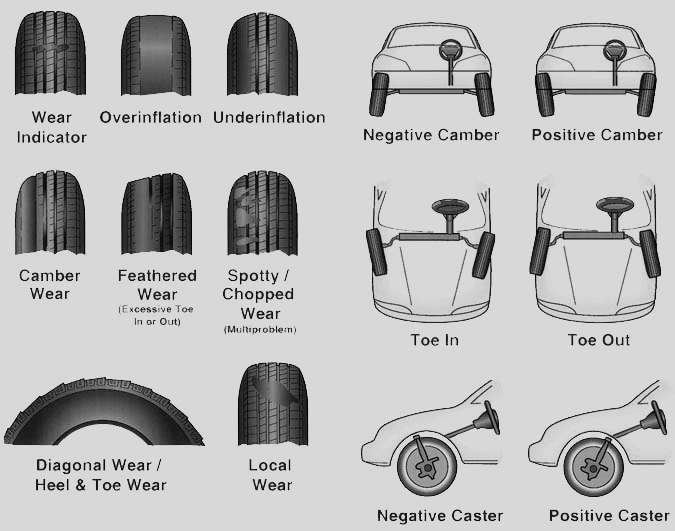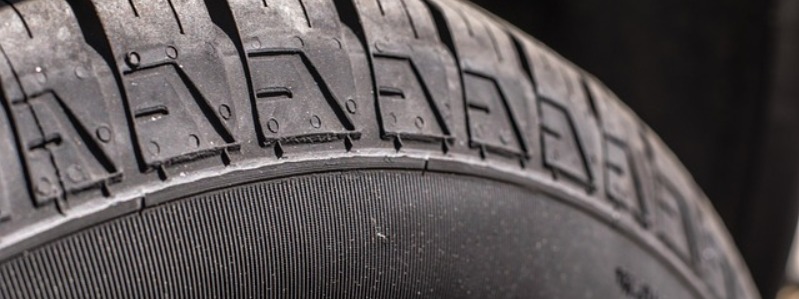Wheel Alignment: How Often Should You Do It?
Contents
As you get behind the steering wheel of your car and head out, you may start to notice a few steering problems, such as drifting to the side of the road or the steering wheel isn’t straight when the wheels are straight. It’s probably time for a car alignment service.
So how often should the wheel alignment be checked? The correct answer is whenever you start to notice problems. At the very least, have the alignment checked at every other oil change or at the first sign of premature tire wear. It can skew the alignment without realizing it, such as hitting curbs, going too fast over speed bumps, hitting potholes too fast, or having an accident, no matter how minor.
Noticeable Signs Could Indicate a Wheel Misalignment
- Vehicle pulling to the left or right
- Uneven or rapid tire wear
- The steering wheel is crooked when driving straight
- Squealing tires
Proper car alignment involves setting the camber (inward or outward tilt of the wheels when looking head-on), caster (wheel tilt front or back looking from the side), and toe-in or toe-out (looking down at the wheels from above). The adjustments are measured in fractions of an inch and require specialized alignment equipment.
Car alignment problems are more damaging than most drivers know. Not only does it affect the handling of your vehicle, but it adds excessive wear and tear to your tires, suspension, and steering systems. A misaligned car can shorten the life of your tires by thousands of miles and compromise crucial steering and suspension parts. The price of an alignment service is much more cost-effective than paying for a new set of tires.
Understanding what wheel alignment is
Wheel alignment is a crucial maintenance task for your vehicle that involves adjusting the angles of the wheels to the manufacturer’s recommended specifications. It refers to the adjustment of the suspension system, which connects the wheels to the vehicle’s frame and ensures proper tire contact with the road.
The caster, camber, and toe are the three main angles adjusted during a wheel alignment. Caster refers to the angle of the steering axis, camber is the inward or outward tilt of the tire, and toe refers to the angle of the tires in relation to each other when viewed from above.
When your wheels are not properly aligned, it can lead to a variety of problems, including uneven tire wear, poor handling, decreased fuel efficiency, and even unsafe driving conditions.
The frequency of wheel alignment depends on various factors, such as driving habits, road conditions, and vehicle type.
Generally, having your wheels aligned every 10,000 to 12,000 miles or once a year is recommended, whichever comes first. However, if you notice any signs of misalignment, such as uneven tire wear or the vehicle pulling to one side, your wheels should be aligned immediately.
What happens when you don’t get a wheel alignment
When you don’t get a wheel alignment, several things can happen that will negatively affect your driving experience and the health of your vehicle.
Your tires will wear out unevenly and prematurely. This is because misaligned wheels cause the tires to drag along the road in a way that’s not intended, which wears down the tread on some parts of the tire more than others. This can lead to a dangerous situation where the tire is more likely to blow out or fail when you’re driving.
Your steering will become less responsive and predictable. When your wheels are aligned, the car will respond quickly and smoothly to your steering inputs. However, when your wheels are misaligned, you might notice that the car pulls to one side or the other or that the steering feels loose or unresponsive. This can be very dangerous if you need to make a sudden maneuver to avoid an obstacle on the road.
Misaligned wheels can cause damage to other parts of your car’s suspension system. This can lead to costly repairs that could have been prevented by getting a wheel alignment at the recommended intervals.
Cost of getting a wheel alignment
The cost of getting a wheel alignment varies depending on where you take your vehicle and the type of alignment needed. A basic front wheel alignment can cost anywhere from $50 to $100, while a full alignment can cost between $100 and $200. However, the cost of not getting your wheels aligned can be much higher in the long run.
If your wheels are not aligned properly, it can lead to uneven tire wear, which can cause you to replace your tires more frequently. Not only is this an added expense, but it can also be dangerous. Poor wheel alignment can also cause your vehicle to pull to one side or the other, making it more difficult to control your vehicle and increasing the risk of an accident.
Poor wheel alignment can also cause your vehicle to have reduced fuel efficiency, increasing fuel expenses over time.
While getting a wheel alignment may seem like an added expense, it is important to remember that the long-term benefits can outweigh the initial cost. By keeping your wheels aligned, you can save money on tire replacements, improve your vehicle’s safety, and even save money on fuel expenses.
Alignment Explained
Alignment is crucial to maintaining your vehicle’s performance and safety. During the process, a technician will adjust the angles of the wheels to ensure they are perpendicular to the ground and parallel to each other. This adjustment affects how the vehicle handles, steers, and brakes and can also impact tire wear and fuel efficiency.

The first step in the wheel alignment is to inspect the tires for wear and damage. The technician will also check the suspension components and steering system are in good condition. Once everything has been inspected and any necessary repairs have been made, the technician will use specialized equipment to measure the angles of the wheels.
The three main angles adjusted during a wheel alignment are the camber, caster, and toe. Camber refers to the angle of the wheels when viewed from the front or rear of the vehicle. Caster refers to the angle of the steering axis when viewed from the side of the vehicle. Toe refers to the angle of the wheels when viewed from above or below the vehicle.
The technician will adjust the angles to the manufacturer’s specifications once the angles have been measured. This is typically done by adjusting the suspension components or steering system. After the adjustments are made, the technician will test drive the vehicle to ensure everything feels and handles correctly.
How to maintain proper wheel alignment
Proper wheel alignment is essential for smooth driving and optimal vehicle performance. There are a few things you can do to help maintain proper wheel alignment and extend the life of your tires.
First, check your tire pressure and adjust as needed regularly. Overinflated or underinflated tires can cause uneven wear and affect wheel alignment.
Second, avoid hitting potholes or curbs whenever possible, as these can cause misalignment.
Third, check your vehicle’s suspension system regularly, as worn suspension components can affect wheel alignment.
Have your wheel alignment checked and adjusted by a professional mechanic at least once a year or whenever you notice any signs of misalignment, such as uneven tire wear or the vehicle pulling to one side. By taking these steps, you can help ensure proper wheel alignment and prolong the life of your tires and vehicle.

